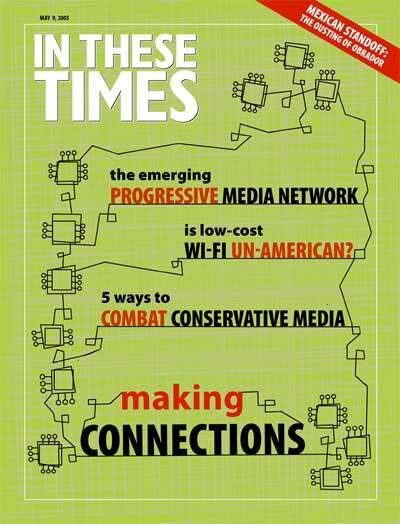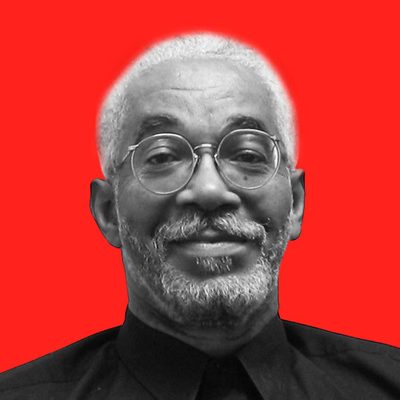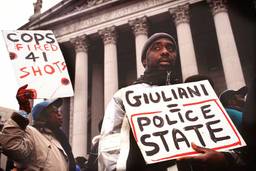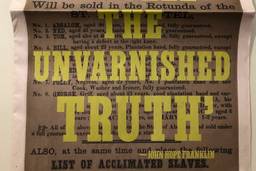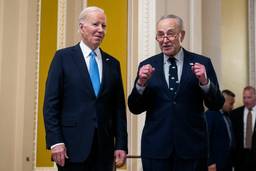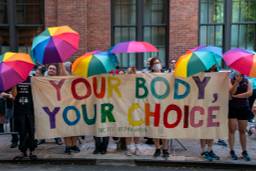Insistent complaints from right-wing pundits about the media’s liberal bias have been effective. Now even the most extreme right-wing notions receive a hearing in the corporate mainstream media.
This tactic has been so successful that the right is now using it to gain more exposure in the black media — a venue they’ve long criticized as left-leaning. The strategy coincides with the GOP’s aggressive attempts to gain more black votes for elections in 2006 and 2008.
The scope of this new outreach was hinted at by news that Armstrong Williams, a conservative black pundit, was paid $240,000 to promote the Bush administration’s “No Child Left Behind” education scheme. Republicans have talked of seeking black votes, but seldom have they devoted resources to the effort.
Because of the right’s effective pitch, African-American publications and black-oriented broadcast media now feel an obligation to showcase conservative voices.The Williams fiasco not only revealed the GOP’s attempt to exploit this opportunity, but also how out of touch the GOP is with the black community. Williams is dismissed as a political huckster in much of black America.
When choosing its black standard-bearers, the GOP seems to be clueless. Remember when the Republican National Committee’s Ed Gillespie hooked up with boxing promoter Don King during the 2004 campaign? “What’s next for the GOP?” asked one Republican blogger, “A photo-op with O.J.?”
Since at least the ’80s, when Rep. Newt Gingrich (R-Ga.) famously urged Republicans “to invent new black leaders,” the GOP has been trying to nurture African-American leaders capable of supplanting the traditional, left-leaning cadre. But the high profile appointments of Colin Powell and Condoleezza Rice have failed to cause a discernable change in black electoral behavior. And this despite the Democrats’ anemic attempts at black outreach.
Their efforts have been hampered by a lack of connection with the cultural currents of the black community. For example, even with Republicans in charge of the government’s three branches (and, some would argue, the Fourth Estate, as well), African Americans seemed almost immune to the pro-war propaganda pushing the Iraq invasion. A Gallup Poll released March 28, 2003 revealed that 68 percent of black Americans opposed the war.
Republicans now see the Bush administration’s “faith-based initiatives” as a new opportunity to wedge the party into the black community. Because of African Americans’ unique history, the church has become the community’s dominant institution and the church’s religious values have always encouraged a kind of cultural conservatism.
Although those values share much with those of the religious right and conservative Republicans, black voters have shied away from GOP candidates. The primary reason for this disjuncture is the right-wing’s racist tradition. Republicans think this sordid history is old news to most black voters and that the time may be ripe to exploit common cultural ties.
Studies and position papers funded by the Lynde and Harry Bradley Foundation predict GOP gains among African Americans if the party uses black churches as centers of faith-based funding for social programs and for private school vouchers.The black media is also a focus of attention because of its unique access to the black community and its prominent focus on religious affairs.
Curiously, the Bradley Foundation also is the financial fount for some of the nation’s most popular neo-racist authors. For instance, the foundation funded and still funds Charles Murray (co-author of The Bell Curve, a neo-racist sourcebook), Dinesh D’Souza, (author of The End of Racism and Illiberal Education, two neo-racist screeds) and David Horowitz (a tireless racial provocateur who runs the incendiary think tank, the Center for the Study of Popular Culture).
Despite these ignoble connections, Bradley bucks are funding the arguments for faith-based funding and school vouchers that fuel the GOP’s quest for a larger black mindshare.
President Bush won 11 percent of the black vote in the 2004 presidential election, just 2 percent higher than what he received in the 2000 election. But he got 16 percent of the black vote in Ohio and Pennsylvania, where the campaign focused on issues like same-sex marriage and school vouchers.
Bush’s success in championing these divisive social issues prompted former RNC chairman Gillespie to predict the GOP would get up to 30 percent of the black vote in 2008. RNC chairman Ken Mehlman seems determined to fulfill his predecessor’s prediction. Immediately after taking office in January, he embarked on a road trip of outreach meetings in the black community. In this effort, Mehlman has focused on priming the pump of faith-based institutions and linking the purse strings to the White House.
But many black churches are fighting back. More about that in my next column.

I hope you found this article important. Before you leave, I want to ask you to consider supporting our work with a donation. In These Times needs readers like you to help sustain our mission. We don’t depend on—or want—corporate advertising or deep-pocketed billionaires to fund our journalism. We’re supported by you, the reader, so we can focus on covering the issues that matter most to the progressive movement without fear or compromise.
Our work isn’t hidden behind a paywall because of people like you who support our journalism. We want to keep it that way. If you value the work we do and the movements we cover, please consider donating to In These Times.
Salim Muwakkil is a senior editor of In These Times and host of “The Salim Muwakkil Show” on radio station WVON-AM in Chicago. Muwakkil was also contributing columnist for both the Chicago Sun-Times (1993 – 1997) and the Chicago Tribune (1998 – 2005). He is also a co-founder of Pacifica News’ network daily “Democracy Now” program and served as an adjunct professor at Northwestern University, University of Illinois, the Art Institute of Chicago and Chicago’s Columbia College.
